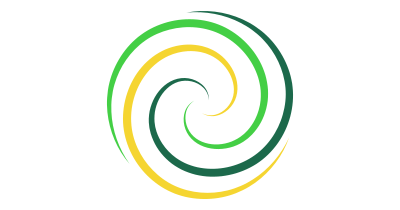
What is the Doughnut?
An introduction to the concept at the heart of Doughnut Economics

Version 1.0 (September 2020)
Overview
This tool is an introduction to the concept at the heart of Doughnut Economics. It's been designed as both a document that can be shared and a presentation that can be given in a classroom, a workshop or a meeting. Either download it as a pdf (below), open it within Google drive (links below) or scroll down to read on this page.
Links
Open as a document in Google Docs
Open as a presentation in Google Slides
What is the Doughnut?
Think of it as a compass for human prosperity in the 21st century, whose goal is to meet the needs of all people within the means of the planet.
It consists of two concentric rings:
- A social foundation – to ensure that no one is left falling short on life’s essentials.
- An ecological ceiling – to ensure that humanity does not collectively overshoot planetary boundaries.
Between these two boundaries lies a doughnut-shaped space that is both ecologically safe and socially just – a space in which humanity can thrive.

The essence of the Doughnut
1. The social foundation – below which lies critical human deprivation
2. The ecological ceiling – beyond which lies critical planetary degradation
These two boundaries are foundational in the sense that humanity should always seek to avoid critical human deprivation and critical planetary degradation. But how best to define their specific dimensions and measure their current status relative to desired outcomes will keep evolving over time.

The Doughnut’s dimensions
(as of 2017)
The Social Foundation
The 12 dimensions of the social foundation are derived from the social priorities agreed in the Sustainable Development Goals (UN, 2015).

The Ecological Ceiling
The 9 dimensions of the ecological ceiling are the nine planetary boundaries defined by Earth-system scientists (Steffen et al., 2015).

Quantifying the Doughnut
The image below reveals the current state of humanity and our planetary home: think of it as humanity’s ‘selfie’ in the early days of the 21st century.
Each dimension is measured, where possible, with 1 or 2 indicators, and the red wedges show the extent of shortfall and overshoot of the Doughnut’s social and planetary boundaries.
It shows us that millions of people still fall short on all 12 of the social dimensions, and that humanity has already overshot at least four planetary boundaries (air pollution and chemical pollution are currently unquantified).
To achieve the 21st century goal of meeting the needs of all within the means of the living planet means eliminating all of the red from the Doughnut diagram, and this must be done from both sides at the same time.

Find out more
Attachments
-
Member

Luciana Maia
-
Member


Luis Osorio
Rionegro, Antioquia, Colombia
I describe myself as a continuous learner who has a passion for designing strategies to solve complex problems businesswise. However, I cannot stick only to the business side of things as our present has demonstrated that life and business are not as apart as I thought a few years ago. They are completely linked, and one relies on the other on a process that is constantly trying to find a clever (not always wise) way to help us, humans, perdure. For me, DEAL is HOPE, and it's giving us, humans, a new chance to make things right (and wise).
-
Member


Bob Thust
Brighton, England, United Kingdom
I co-founded a small networked business to provide practical support on governance across organisations, networks, communities and movements. Interested in how new and regenerative approaches to governance - issues of ownership, power, control, organising, (inter)dependence and decision-making in a variety of settings - can help support the foundations of a new economic system.
-
Member


Ward Stirrat
Vancouver, British Columbia, Canada
-
Member


Sabrina Rodriguez
Buenos Aires, Ciudad Autónoma de Buenos Aires, Argentina
-
Member

%2018.52.31_a268aaa1.jpg)
Carolina Tomaz
Brazil
I'm part of the Donut Brasil network, and together we are experiencing the tools and knowledge of the Doughnut Economics in many projects and in the Latin America and Brazil contexts. I describe myself as a XXI century economist, who adopts systemic and transdisciplinary thinking, and understands the world as a complex socio-ecological system. My goal is to work with regenerative projects for the development of inclusive, intelligent, and sustainable cities and communities. I have been particularly interested in applying the Doughnut economy model for cities, business and organisations. I have experience with projects planning and management, structuration and implementation of new governance models, and group's facilitation collaborative methods to co-create more effective and sustainable solutions for social problems.
-
Member

Cathy Little
Grey Highlands, Ontario, Canada
I'm a second-term Councillor with the Municipality of Grey Highlands, a geographically large, rural municipality with a population of 10 000+. My responsibilities include Community and Economic Development Liaison, Economic Development Advisory Committee Member and Conservation Authority Board Member. My personal experience and professional life led me to Doughnut Economics. I am excited to learn and share with my community.
-
Member


Lina Hayek
London, UK
Design Consultant
Comments
Join the DEAL Community!
Get inspired, connect with others and become part of the movement. No matter how big or small your contribution is, you’re welcome to join!

.jpg)


